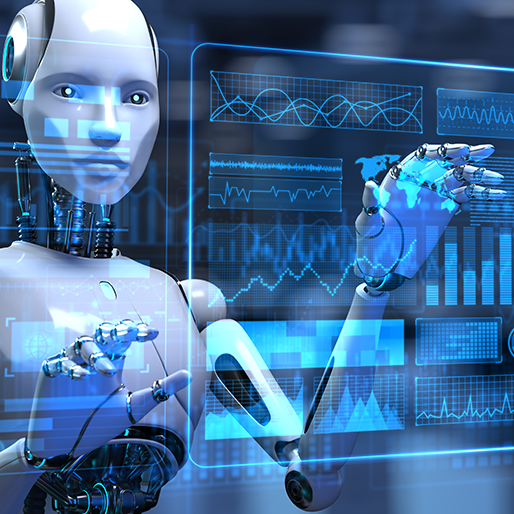The impact of robotics and automation on the future of work is a topic of significant interest -- and concern.
There's an increased prevalence and integration of robotics and automation into various industries. While they offer numerous benefits, robotics and automation also raise questions about the future of jobs and the skills required in work.
This article details the impact of robotics and automation on the future of work.
What is Robotics and Automation at Work?
Robotics and automation at work refer to the integration of technologies, such as robots and automated systems, to perform tasks traditionally carried out by humans in the workplace. This involves using machines equipped with sensors, software, and control systems to automate repetitive, complex, or hazardous tasks efficiently and accurately.
But it can also involve using productivity and automation software to support workflow management and efficiency.
One example of robotics and automation at work is in manufacturing industries, where robotic arms are employed on assembly lines to perform tasks like welding, painting, or picking and placing items with precision and speed. These robots can work continuously, enhancing productivity, reducing errors, and improving overall efficiency in the production process.
Impacts of Robotics and Automation on the Future of Work
Here’s how robotics and automation have impacted or may impact the future of work:
Collaboration between Humans and Machines
Rather than completely replacing humans, robotics and automation may lead to collaboration between humans and machines. While machines automate, humans remain essential for tasks that require critical thinking, creativity, problem-solving, and interpersonal skills. For instance, when AI contact centers can handle routine inquiries, it lightens the loads of simple tasks that the human customer service team need to address. This allows them to focus their expertise and empathy on resolving more complex problems that require nuanced understanding and personalized solutions - qualities that current AI systems are unable to replicate. Hence, the future of work involves humans working alongside machines to enhance their productivity.
Automating routine tasks
The future of work with robotics is about automation. Robotics can automate repetitive, routine, redundant, and time-consuming tasks. This can free up employees' time and resources to focus on other essential business tasks. This means robotics may make work more efficient in the future.
Automation and productivity apps like Monday, Jirra, Trello, GitHub, TrulyOffice, Notin, etc., exert a profound impact on work dynamics. These tools streamline tasks, enhancing efficiency by automating repetitive activities and optimizing workflows. They empower teams to collaborate seamlessly through communication and project management tools, whether in-office or remotely. Additionally, they aid in data management and analysis, enabling informed decision-making by providing valuable insights.
By reducing manual intervention, these tools contribute to cost savings while also improving customer experience through chatbots and automated responses. Moreover, they foster skill enhancement among employees, encouraging digital literacy and adaptability to technological advancements.
Skill Shift and Demand for New Skills
The integration of robotics and automation at work creates a shift in the skills demanded in the job market. There may be a decline in the jobs that require manual labor, and jobs that require automation, Artificial Intelligence, data analysis, and robotics may increase. Workers need to acquire new skills, reskill, or upskill to adapt to this evolving landscape.
Improve efficiency and productivity
By streamlining processes, automating routine tasks, and providing real-time insights, robotics helps businesses operate more efficiently. This helps reduce manual errors and improves productivity for overall business efficiency.
Enhance decision-making
Artificial Intelligence (AI) algorithms in automation and robotics analyze vast amounts of data, identifying patterns used to make accurate predictions. Through these predictions, businesses are making informed, accurate, and effective decisions.
Improved quality and safety
Artificial intelligence (AI) and robotics create automation that reduces errors and improves quality and safety. This helps improve both worker and machine safety while improving the quality of work.
Upskilling for the Automated Workforce
Workers may need to upskill and reskill to meet the demands of AI and automation. Online coding boot camps online offer an excellent opportunity to upskill and adapt to the demands of an automated workforce. By acquiring coding skills, you can position yourself for emerging job opportunities in robotics and automation.
Collaboration between Humans and Machines
Rather than completely replacing humans, robotics and automation may lead to collaboration between humans and machines. While machines automate, humans remain essential for tasks that require critical thinking, creativity, problem-solving, and interpersonal skills. The future of work involves humans working alongside machines to enhance their productivity.
New Job Opportunities and Industries
While robotics and automation may displace or replace some jobs, they will also create new job opportunities and entire industries. Roles such as data analysts, automation specialists, robotics engineers, and AI trainers are emerging with the growing demand for these skills. Workers who adapt to the new man-machine collaboration and new industries can find rewarding employment.
Job Displacement and Transformation
The rise of robotics and automation will potentially displace certain jobs when tasks become automated. Machines will replace repetitive and routine tasks in a bid to improve efficiency, but this will lead to job displacement and transformation.
Final Thoughts
Overall, the impact of robotics and automation on the future of work is far-reaching. While there are expectations of improved productivity, efficiency, and new jobs, there are also concerns about job displacement and the need for upskilling. Adapting to the changing landscape and acquiring new skills will be key to thriving in the automated workforce of the future.
Further Reading
» How to Build a PC: The Ultimate PC Building Guide
» Trends of AI in Business: Uses, Benefits, & Challenge
» How AI Will Give Superpowers To ERP Solutions
» Transforming Presentations with the AI PPT Maker Tool
